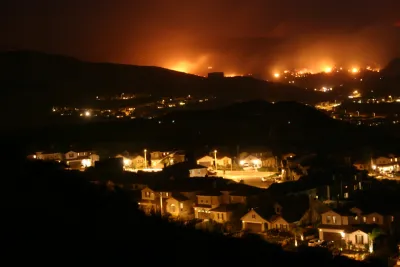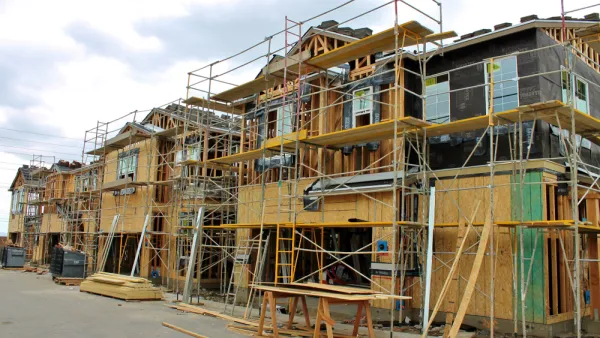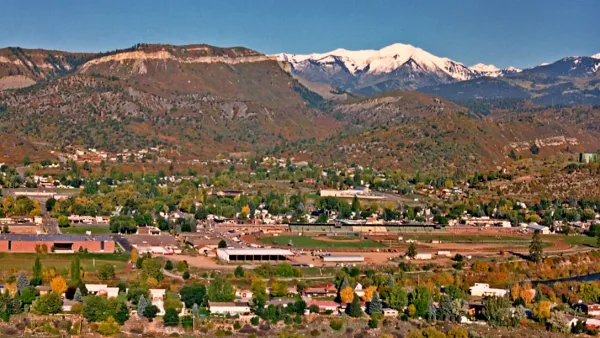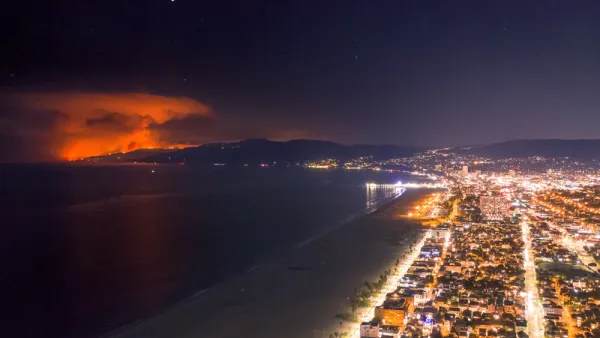As wildfires grow more destructive, how far should states go to protect homes located in high-risk areas?

"The California Department of Insurance last month released new regulations that require insurance companies to reward homeowners who take steps to protect their home from wildfire, such as clearing brush and trees from the immediate vicinity of their home or putting on a fire-resistant roof." But as wildfires become more frequent and destructive, writes Emma Marris, "to what extent should we cushion the blow of these dangers, and is there a limit to how much, or how long, we pay?"
Insurers are scrambling to figure out their strategy for the future as more destructive fires wipe out their earnings. "Insurance companies are prohibited by state law from using models of future conditions to set their rates, but with the fires of the past five or so years, even backwards-looking risk calculations are beginning to prompt insurers to raise rates or refuse to renew policies."
"In 32 states, rejected homeowners can always get coverage through programs known as FAIR plans—insurance pools run collectively by every company offering homeowner’s insurance in the state." Critics of FAIR plans say "These policies send an unrealistic message to homeowners about how much risk they are taking on."
But raising FAIR premiums could have a negative impact on low-income households, notes Marris. "If people are exposing themselves to risk simply because they want to, using insurance policy to make it expensive or impossible to do so sounds like a great idea. But when people are moving to risky areas out of necessity, the same policies could instead seem cruel."
Experts urge community-level, "collective hardening actions—cleaning up fuels that encircle whole neighborhoods, sending a free truck around to remove woody debris from yards, ensuring enough water is available for firefighters when they crack open a hydrant."
FULL STORY: People Deserve to Know Their Houses Are Going to Burn

National Parks Layoffs Will Cause Communities to Lose Billions
Thousands of essential park workers were laid off this week, just before the busy spring break season.

Retro-silient?: America’s First “Eco-burb,” The Woodlands Turns 50
A master-planned community north of Houston offers lessons on green infrastructure and resilient design, but falls short of its founder’s lofty affordability and walkability goals.

Delivering for America Plan Will Downgrade Mail Service in at Least 49.5 Percent of Zip Codes
Republican and Democrat lawmakers criticize the plan for its disproportionate negative impact on rural communities.

Test News Post 1
This is a summary

Test News Headline 46
Test for the image on the front page.

Balancing Bombs and Butterflies: How the National Guard Protects a Rare Species
The National Guard at Fort Indiantown Gap uses GIS technology and land management strategies to balance military training with conservation efforts, ensuring the survival of the rare eastern regal fritillary butterfly.
Urban Design for Planners 1: Software Tools
This six-course series explores essential urban design concepts using open source software and equips planners with the tools they need to participate fully in the urban design process.
Planning for Universal Design
Learn the tools for implementing Universal Design in planning regulations.
EMC Planning Group, Inc.
Planetizen
Planetizen
Mpact (formerly Rail~Volution)
Great Falls Development Authority, Inc.
HUDs Office of Policy Development and Research
NYU Wagner Graduate School of Public Service





























